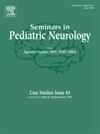资源有限地区脑瘫的病因和诊断
IF 2.1
4区 医学
Q2 CLINICAL NEUROLOGY
引用次数: 0
摘要
由于若干原因,资源有限的国家脑瘫患病率高于高收入国家。脑瘫的病因和危险因素是多因素的,包括围生期、血管、感染和遗传因素,具有显著的区域差异。尽管新生儿护理和早期干预的进步改善了高收入国家的结果,但在资源有限的地区,由于诊断延迟、获得专业医疗服务的机会不足以及社会经济制约,CP的负担仍然过高。早期诊断对及时干预至关重要,可显著改善运动和认知预后。在资源匮乏的环境中,训练有素的医疗保健专业人员有限,缺乏标准化的筛查工具,以及不充分的新生儿随访计划可能会阻碍早期识别。此外,社会和文化规范可能导致医疗护理延迟,进一步加剧受影响儿童的残疾。本文探讨了资源有限地区CP的病因学和诊断挑战,强调了这些地区普遍存在的独特风险因素和诊断挑战。还讨论了早期诊断和干预的潜在低成本解决方案,包括使用简单的临床评估工具、移动卫生技术和基于社区的康复战略。通过具有成本效益、可扩展和可持续的干预措施来应对这些挑战,可以改善CP儿童的预后,减轻家庭和卫生保健系统的长期经济和社会负担。本文章由计算机程序翻译,如有差异,请以英文原文为准。
Etiology and diagnosis of cerebral palsy in resource-limited regions
The prevalence of cerebral palsy (CP) is greater in resource limited countries than in higher income countries for several reasons. The etiology and risk factors for cerebral palsy are multifactorial, including perinatal, vascular, infectious, and genetic factors with significant regional variations. Whereas advancements in neonatal care and early intervention have improved outcomes in high-income countries, the burden of CP remains disproportionately high in resource-limited regions due to delayed diagnosis, inadequate access to specialized healthcare, and socioeconomic constraints. Early diagnosis of CP is crucial for timely intervention, which can significantly improve motor and cognitive outcomes. In low-resource settings, limited availability of trained healthcare professionals, lack of standardized screening tools, and inadequate neonatal follow-up programs can hinder early identification. Additionally, social and cultural norms can contribute to delayed medical attention, further exacerbating disability in affected children.
This article explores the etiology and diagnostic challenges of CP in resource-limited regions, emphasizing the unique risk factors and diagnostic challenges prevalent in these settings. Potential low-cost solutions for early diagnosis and intervention, including the use of simple clinical assessment tools, mobile health technology, and community-based rehabilitation strategies are also discussed. Addressing these challenges through cost-effective, scalable and sustainable interventions can improve outcomes for children with CP, reducing the long-term economic and social burden on families and healthcare systems.
求助全文
通过发布文献求助,成功后即可免费获取论文全文。
去求助
来源期刊

Seminars in Pediatric Neurology
CLINICAL NEUROLOGY-PEDIATRICS
CiteScore
4.80
自引率
0.00%
发文量
38
审稿时长
84 days
期刊介绍:
Seminars in Pediatric Neurology is a topical journal that focuses on subjects of current importance in the field of pediatric neurology. The journal is devoted to making the status of such topics and the results of new investigations readily available to the practicing physician. Seminars in Pediatric Neurology is of special interest to pediatric neurologists, pediatric neuropathologists, behavioral pediatricians, and neurologists who treat all ages.
 求助内容:
求助内容: 应助结果提醒方式:
应助结果提醒方式:


